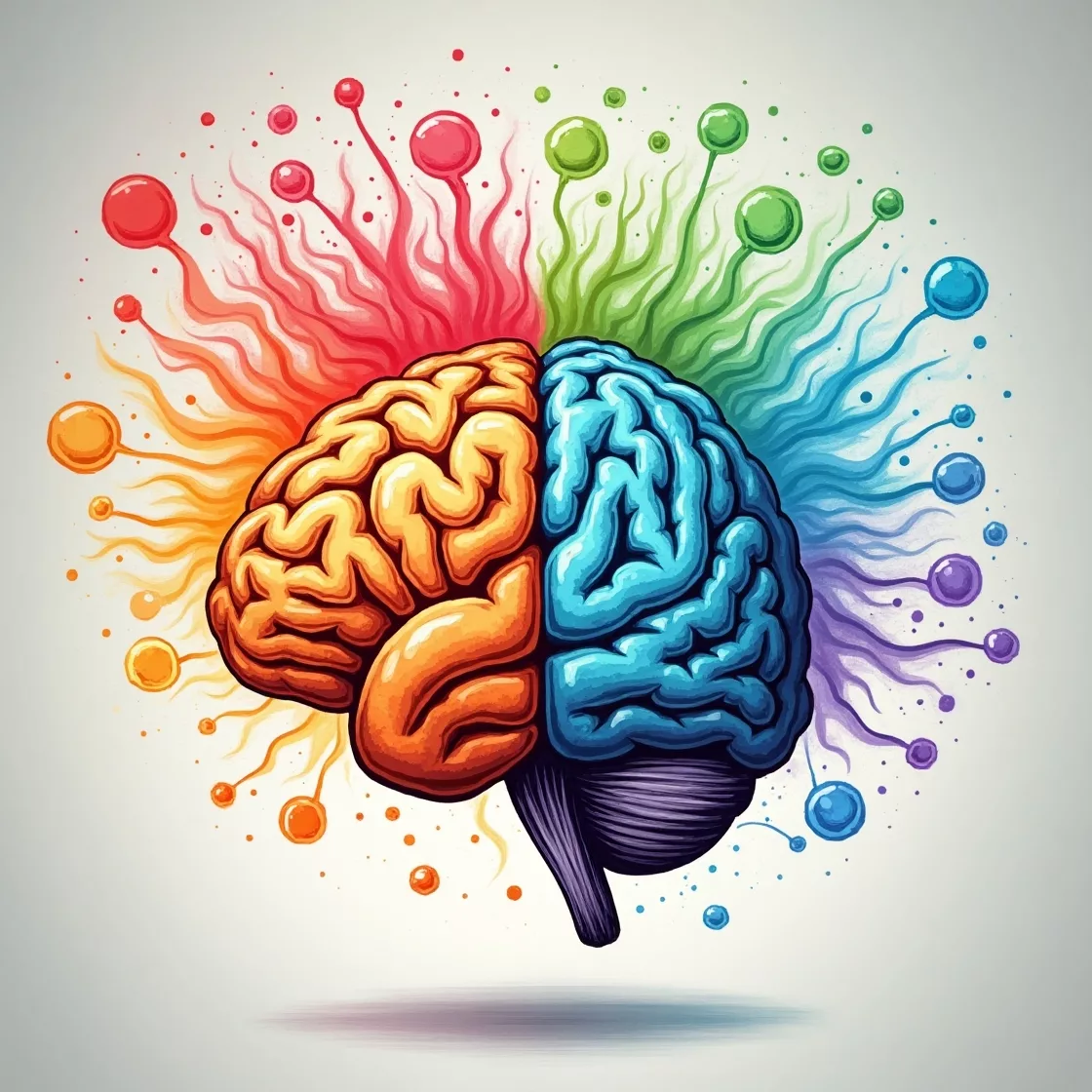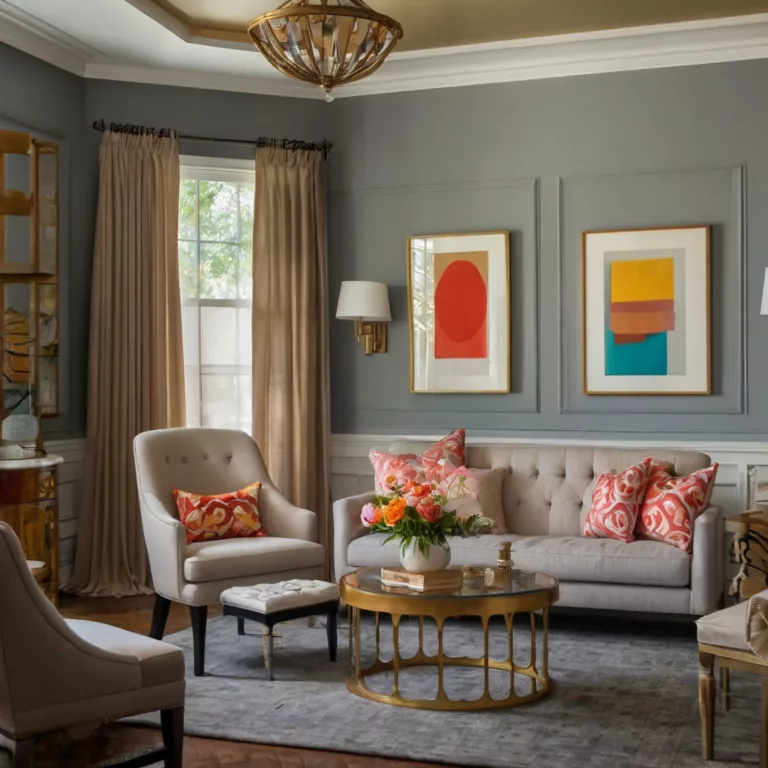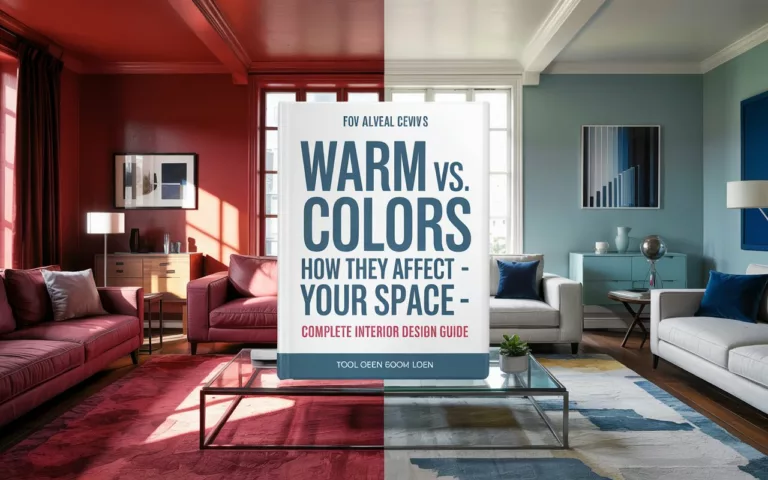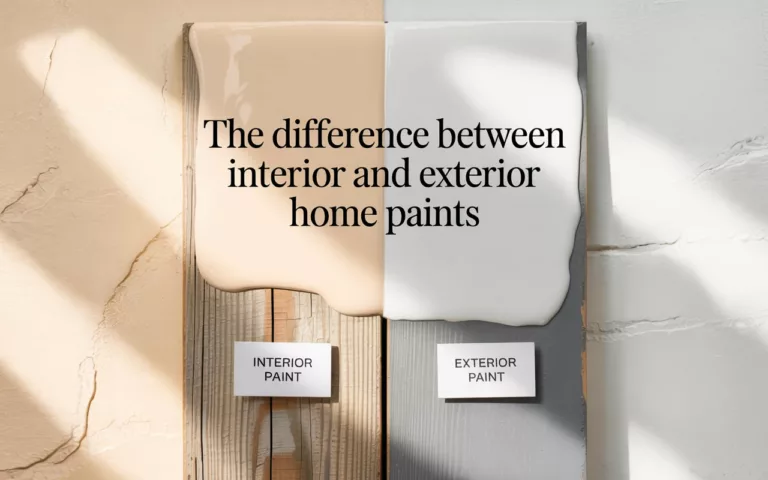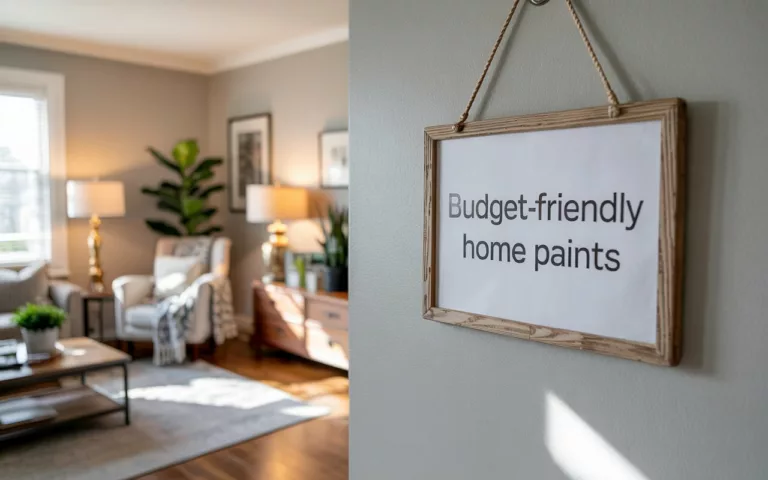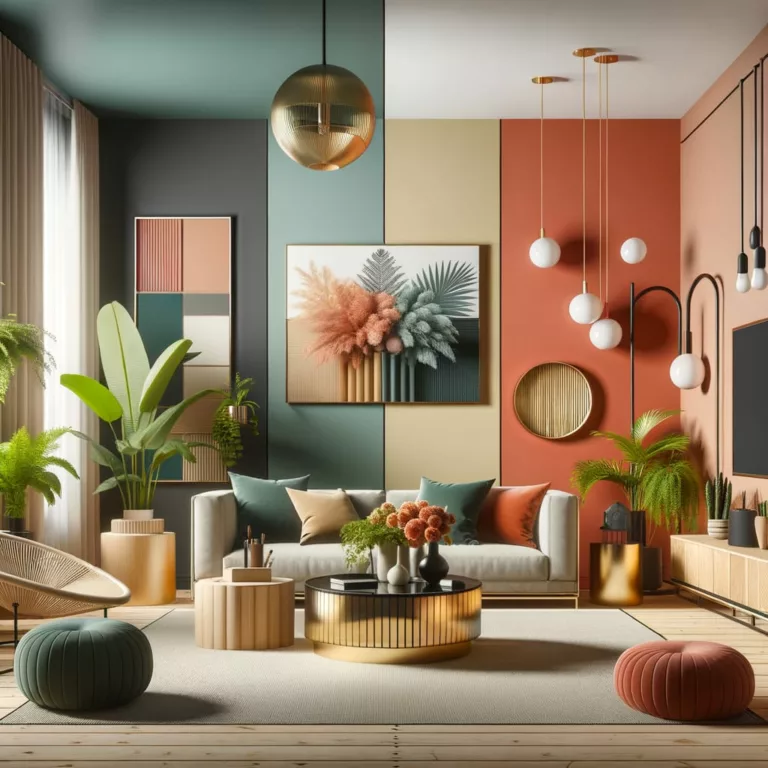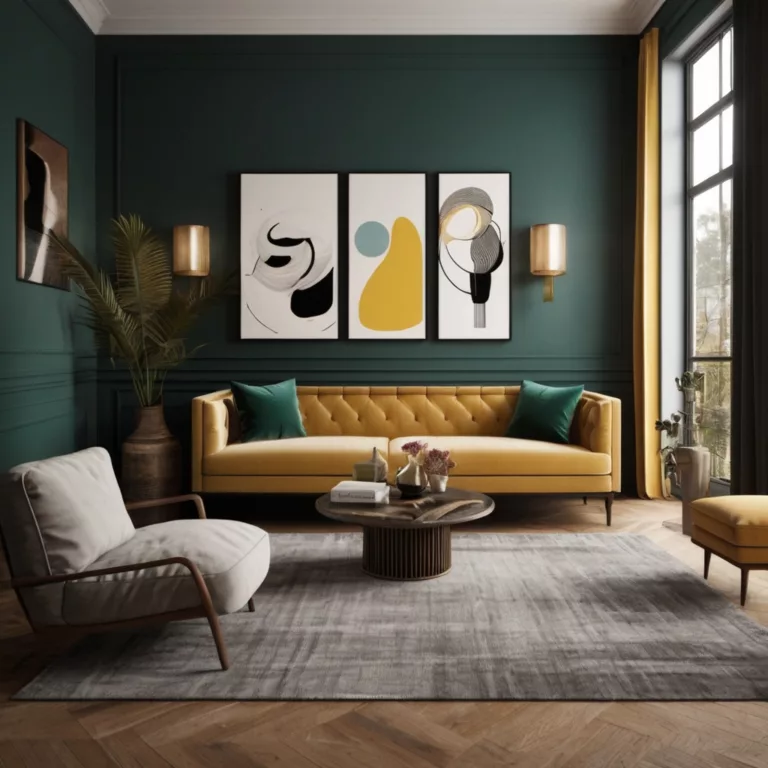Color Psychology: The Impact of Colors on Human Behavior – 5 Powerful Ways Colors Shape Our World
Color psychology is the fascinating study of how colors affect human perception, emotions, and behavior. From marketing strategies to interior design, the psychological effects of color influence nearly every aspect of our daily lives. This comprehensive guide explores the profound impact colors have on our minds and actions, backed by scientific research and practical applications.
The Science Behind Color Psychology
Color perception begins in the eyes, where specialized cells called cones detect different wavelengths of light. These signals travel to the brain, specifically the hypothalamus, which regulates hormones and other physiological processes. This biological connection explains why colors can trigger immediate emotional and physical responses.
Research from the University of Rochester has demonstrated that red can increase heart rate and stimulate adrenaline, while blue has been shown to lower blood pressure and calm the nervous system. These reactions occur almost instantaneously, often before conscious awareness.
“Color is a power which directly influences the soul,” said Wassily Kandinsky, the pioneering abstract artist who extensively studied color theory. This sentiment reflects the deep neurological connection between visual stimuli and emotional response.
Historical Perspectives on Color Symbolism
The cultural significance of colors has evolved throughout history, with fascinating variations across civilizations:
Ancient Civilizations
In Ancient Egypt, blue represented divinity and the heavens, while green symbolized growth and rebirth. Meanwhile, Ancient Chinese culture associated red with good fortune and prosperity, beliefs that continue to influence contemporary Chinese celebrations.
Medieval Europe
During the Middle Ages, purple was reserved exclusively for royalty due to the extreme expense of purple dye, which was derived from a rare Mediterranean sea snail. The Catholic Church established color associations that persist today, including white for purity and black for mourning.
Indigenous Traditions
Native American tribes developed intricate color symbolism, with many Plains tribes associating yellow with the east and new beginnings, while black often represented the west and introspection. Among the Navajo, turquoise holds spiritual significance as a protector and bringer of good fortune.
The Emotional Impact of Individual Colors
Each color evokes distinct emotional and psychological responses that marketers and designers strategically utilize. Let’s explore the primary colors and their complex effects:
Red: Power, Energy, and Passion
Red, the most physiologically stimulating color, increases pulse rate and creates a sense of urgency. This explains why it’s commonly used for clearance sales and fast-food restaurants that benefit from customer turnover. Research published in the Journal of Experimental Psychology found that individuals perform worse on cognitive tasks when exposed to red, potentially due to its association with danger and mistakes.
However, red also symbolizes love and passion in many contexts. Studies show that both men and women perceive potential partners as more attractive when they wear red, demonstrating its powerful association with romance and desire.
Blue: Trust, Calm, and Security
Blue consistently ranks as the world’s favorite color across cultures and genders. Its associations with the sky and ocean evoke feelings of stability and tranquility. The University of British Columbia found that blue environments enhance creativity and open-minded thinking.
Financial institutions frequently employ blue in their branding to convey trustworthiness and security. Healthcare facilities often incorporate blue elements to create calming environments that reduce patient anxiety. Studies show that blue light can help reduce blood pressure and regulate circadian rhythms.
Yellow: Optimism, Clarity, and Attention
Yellow stimulates the left side of the brain, associated with logical thinking and clear judgment. Its high visibility makes it ideal for warning signs and emergency vehicles. Research in color psychology indicates that yellow environments may increase concentration and memory retention, making it valuable for educational settings.
However, excessive yellow can create anxiety and visual fatigue. Studies have shown that babies cry more frequently in yellow rooms, and people are more likely to lose their temper in yellow environments.
Green: Balance, Growth, and Harmony
Green occupies the center of the visible spectrum, requiring no adjustment by the eye and creating a sense of balance. Its association with nature makes it the universal symbol of environmental consciousness. Research demonstrates that exposure to green environments reduces stress and mental fatigue while improving focus and concentration.
In retail settings, green creates a sense of relaxation that encourages thoughtful decision-making, making it ideal for financial products and sustainable brands. Healthcare studies show that patients with views of green spaces recover faster and require less pain medication.
Purple: Creativity, Wisdom, and Luxury
Purple combines the energy of red with the calm of blue, creating a balance that stimulates creativity and contemplation. Historically associated with royalty and wealth, purple continues to convey premium quality and exclusivity in branding.
Research from the University of British Columbia found that purple environments enhance problem-solving abilities and artistic expression. Many creative industries and beauty brands leverage purple to convey sophistication and innovation.
Black: Sophistication, Authority, and Mystery
Though technically the absence of color, black profoundly influences perception. It communicates power, authority, and exclusivity, which explains its prevalence in luxury marketing and formal attire. Research indicates that products with black packaging are perceived as more expensive and sophisticated.
However, excessive black can create feelings of heaviness and oppression. Interior designers recommend balancing black with lighter elements to create dramatic contrast without overwhelming spaces.
White: Purity, Simplicity, and Cleanliness
White reflects all wavelengths of visible light, creating a sense of spaciousness and clarity. It symbolizes purity across numerous cultures and contexts. Research shows that white environments enhance perceived cleanliness and organization.
The minimalist design movement extensively utilizes white to communicate simplicity and efficiency. Healthcare facilities employ white to convey sterility and professionalism, though contemporary designs often incorporate color accents to create more welcoming environments.
Color Psychology in Marketing and Branding
Companies invest substantial resources in color selection because of its profound impact on consumer perception and behavior. According to research by the University of Winnipeg, people make subconscious judgments about products within 90 seconds of initial viewing, with up to 90% of that assessment based on color alone.
The Color of Trust: Building Consumer Confidence
Financial institutions typically employ blue color schemes to evoke trust and security. A 2018 study published in the Journal of Consumer Psychology found that blue branding increased perceived trustworthiness by 15% compared to identical materials using other colors.
Color and Brand Recognition
Color increases brand recognition by up to 80%, according to research from the University of Loyola. Consistent color application creates immediate visual identification—consider Coca-Cola’s distinctive red or Tiffany’s proprietary blue. These color associations become so powerful that companies often trademark their specific color formulations.
Gender Differences in Color Preference
Research reveals significant gender differences in color preference that influence marketing strategies:
- Men typically prefer bold colors like black, blue, and green, responding positively to straightforward color schemes.
- Women generally demonstrate greater appreciation for softer colors and nuanced tints and shades, with preferences for purple, pink, and lighter blues.
- Men show higher tolerance for achromatic colors (black, white, gray), while women respond more positively to a broader color palette.
These preferences inform gender-targeted marketing, though contemporary approaches increasingly challenge traditional color associations.
Color Psychology in Environmental Design
The strategic application of color in physical spaces significantly impacts human experience and behavior.
Workplace Environments
Research demonstrates that thoughtful color implementation in workplace environments can increase productivity by 15% and reduce errors by 27%. Blue enhances cognitive performance and focus, making it ideal for offices requiring concentrated attention. Yellow stimulates creativity and optimism, beneficial for creative industries and collaborative spaces.
A 2019 study published in the Journal of Environmental Psychology found that employees in environments with strategically implemented color reported 32% higher job satisfaction than those in monochromatic spaces.
Educational Settings
Color significantly influences learning outcomes and student behavior. Research has shown that:
- Blue environments enhance reading comprehension and critical thinking
- Yellow stimulates memory retention and optimism
- Green reduces anxiety and improves concentration
- Orange increases social interaction and communication
The University of British Columbia found that students performed 12% better on reading comprehension tests in blue rooms compared to red rooms, where they performed better on detail-oriented tasks.
Healthcare Facilities
Evidence-based design in healthcare settings leverages color psychology to improve patient outcomes. Studies have shown that:
- Blue reduces blood pressure and anxiety
- Green accelerates healing and reduces stress
- Pink temporarily decreases aggression and hostility
- Warm colors (red, orange, yellow) stimulate patients who require rehabilitation and movement
- Cool colors (blue, green, purple) calm patients requiring rest and recovery
A landmark study at Johns Hopkins Hospital found that patients in rooms with strategic color implementation requested 22% less pain medication than those in traditional hospital environments.
Cultural Variations in Color Perception
While some color responses appear universal, many color associations vary significantly across cultures, creating challenges for global marketing and communication.
Eastern vs. Western Color Symbolism
- White symbolizes purity and weddings in Western cultures but represents mourning and funerals in many Eastern traditions
- Red signifies danger or caution in Western contexts but represents good fortune and prosperity in Chinese culture
- Purple conveys royalty and luxury in Western traditions but can symbolize mourning in some Latin American countries
- Yellow is associated with cowardice in some Western contexts but represents courage and nobility in Japan
Religious Color Symbolism
Religious traditions have established powerful color associations:
- Green holds special significance in Islam, representing paradise and the Prophet Muhammad
- Red symbolizes sacrifice and the blood of Christ in Christianity
- Saffron orange represents sacrifice and the quest for light in Hinduism
- White symbolizes death and rebirth in many Buddhist traditions
- Blue is associated with divine protection in Judaism, particularly in the form of the “evil eye” amulet
The Future of Color Psychology: Emerging Research
Contemporary research continues to uncover fascinating dimensions of color psychology, opening new applications and understanding.
Neurological Color Response
Advanced neuroimaging techniques are revealing precisely how different colors affect brain activity. Research using functional magnetic resonance imaging (fMRI) has demonstrated that:
- Red stimulates the amygdala, associated with emotional processing
- Blue activates the hippocampus, linked to memory formation
- Green triggers activity in brain regions associated with creativity and problem-solving
These findings are informing more precise applications in therapeutic and commercial contexts.
Color and Chronobiology
Research into circadian rhythms has revealed that exposure to different light wavelengths (colors) significantly impacts biological functions. Blue light suppresses melatonin production, affecting sleep patterns, while red light has minimal impact on melatonin levels.
This understanding has led to innovations like blue-light blocking glasses and smart lighting systems that adjust color temperature throughout the day to support natural biological rhythms.
Virtual Reality and Color Experience
As virtual reality technologies advance, researchers are exploring how color perception differs in virtual environments. Initial studies suggest that color may have even stronger emotional impacts in immersive digital spaces, where environmental variables can be precisely controlled.
Practical Applications of Color Psychology
Understanding color psychology empowers individuals and organizations to make more effective color choices across various domains.
Personal Color Choices
Individual color preferences often reflect psychological needs and personality traits. People naturally gravitate toward colors that provide emotional benefits they seek:
- Those seeking excitement or stimulation may prefer red environments
- Individuals experiencing stress often benefit from blue and green surroundings
- People seeking creative stimulation often respond well to purple and yellow elements
Therapeutic Color Applications
Chromotherapy, though still considered alternative medicine, has shown promising results in specific applications:
- Blue light therapy effectively treats seasonal affective disorder and certain skin conditions
- Green environments demonstrably reduce stress and anxiety
- Red light therapy shows evidence of accelerating wound healing and reducing inflammation
- Yellow environments may help alleviate depression symptoms
Ethical Considerations in Color Application
The power of color psychology raises important ethical questions about its application, particularly in marketing and persuasion contexts. Responsible professionals consider:
- Avoiding exploitative use of color to manipulate vulnerable populations
- Ensuring accessibility for individuals with color vision deficiencies
- Respecting cultural sensitivities around color symbolism
- Providing transparency about strategic color choices in persuasive contexts
Conclusion: The Continuing Evolution of Color Psychology
Color psychology remains a dynamic field at the intersection of neuroscience, psychology, design, and cultural studies. As our understanding of the brain advances and research methodologies become more sophisticated, our knowledge of how and why colors affect us continues to expand.
The strategic application of this knowledge offers significant benefits across healthcare, education, business, and personal wellbeing. By understanding the profound impact colors have on our emotions, cognition, and behavior, we can create environments and experiences that positively influence human experience.
While individual responses to color will always retain some degree of personal and cultural variability, the growing body of research provides valuable guidelines for harnessing the power of color psychology in intentional and beneficial ways.
References and Further Reading
- Adams, F. M., & Osgood, C. E. (2015). “A cross-cultural study of the affective meanings of color.” Journal of Cross-Cultural Psychology, 46(2), 248-270.
- Elliot, A. J., & Maier, M. A. (2014). “Color psychology: Effects of perceiving color on psychological functioning in humans.” Annual Review of Psychology, 65, 95-120.
- Labrecque, L. I., & Milne, G. R. (2012). “Exciting red and competent blue: The importance of color in marketing.” Journal of the Academy of Marketing Science, 40(5), 711-727.
- Palmer, S. E., & Schloss, K. B. (2010). “An ecological valence theory of human color preference.” Proceedings of the National Academy of Sciences, 107(19), 8877-8882.
- Yildirim, K., Hidayetoğlu, M. L., & Capanoglu, A. (2011). “Effects of interior colors on mood and preference: Comparisons of two living rooms.” Perceptual and Motor Skills, 112(2), 509-524.
- Zhang, T., & Han, B. (2014). “Psychological effects of color on human functioning: A review.” Journal of Environmental Psychology, 38, 206-216.
- Mehta, R., & Zhu, R. J. (2009). “Blue or red? Exploring the effect of color on cognitive task performances.” Science, 323(5918), 1226-1229.
- Kaya, N., & Epps, H. H. (2004). “Relationship between color and emotion: A study of college students.” College Student Journal, 38(3), 396-405.
- Bottomley, P. A., & Doyle, J. R. (2006). “The interactive effects of colors and products on perceptions of brand logo appropriateness.” Marketing Theory, 6(1), 63-83.
- Huchendorf, L. (2007). “The effects of color on memory.” UW-L Journal of Undergraduate Research, 10, 1-4.

